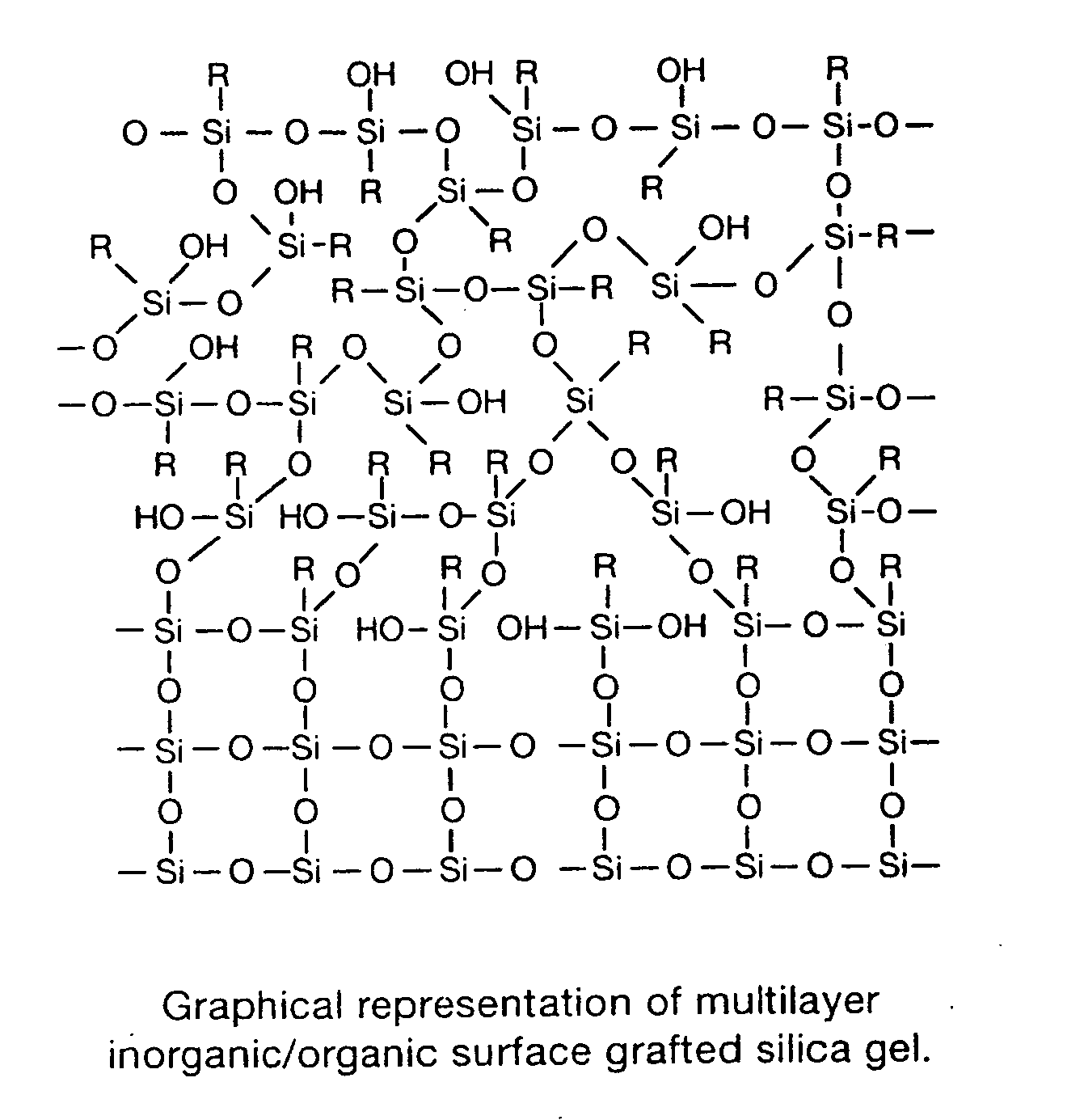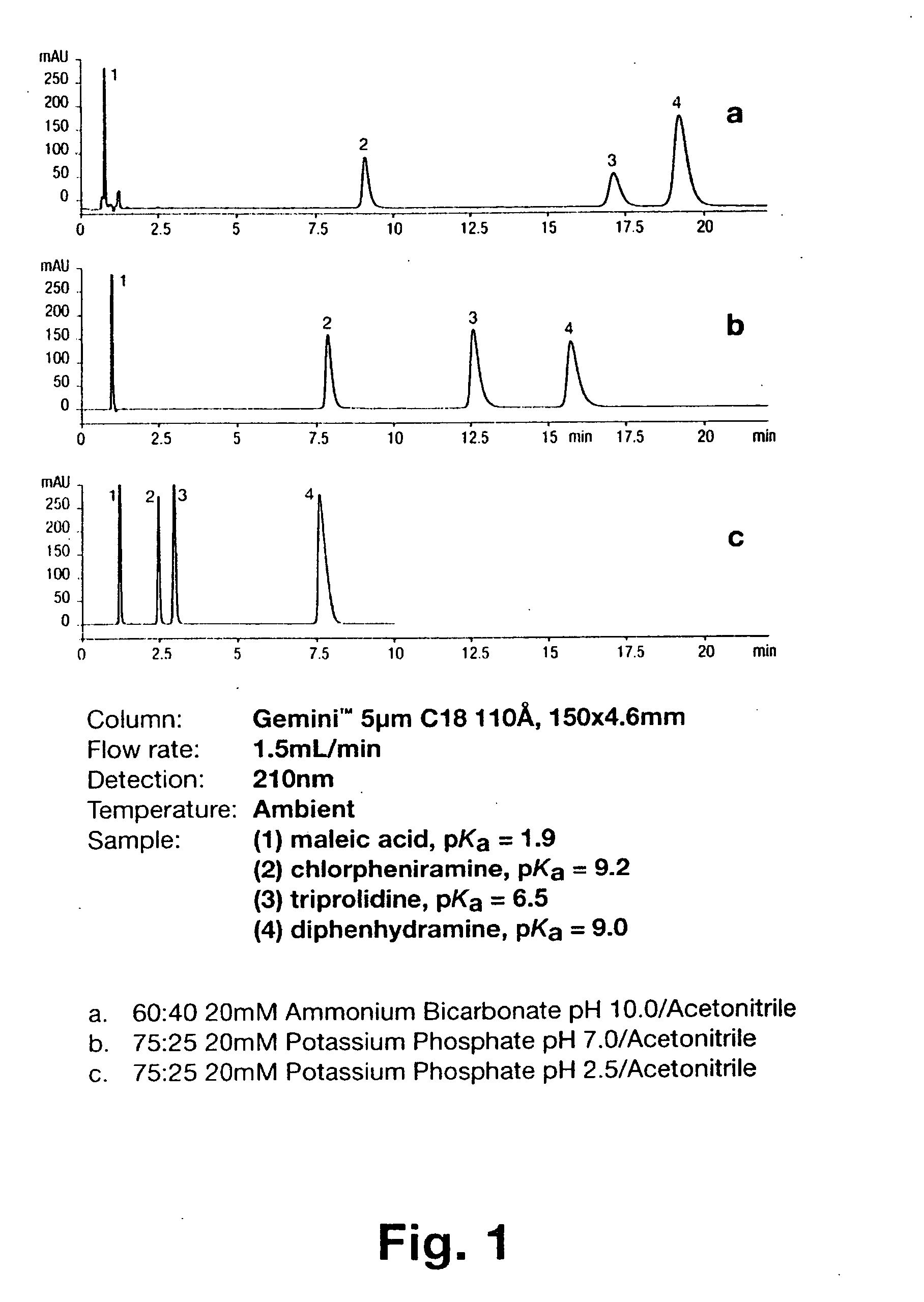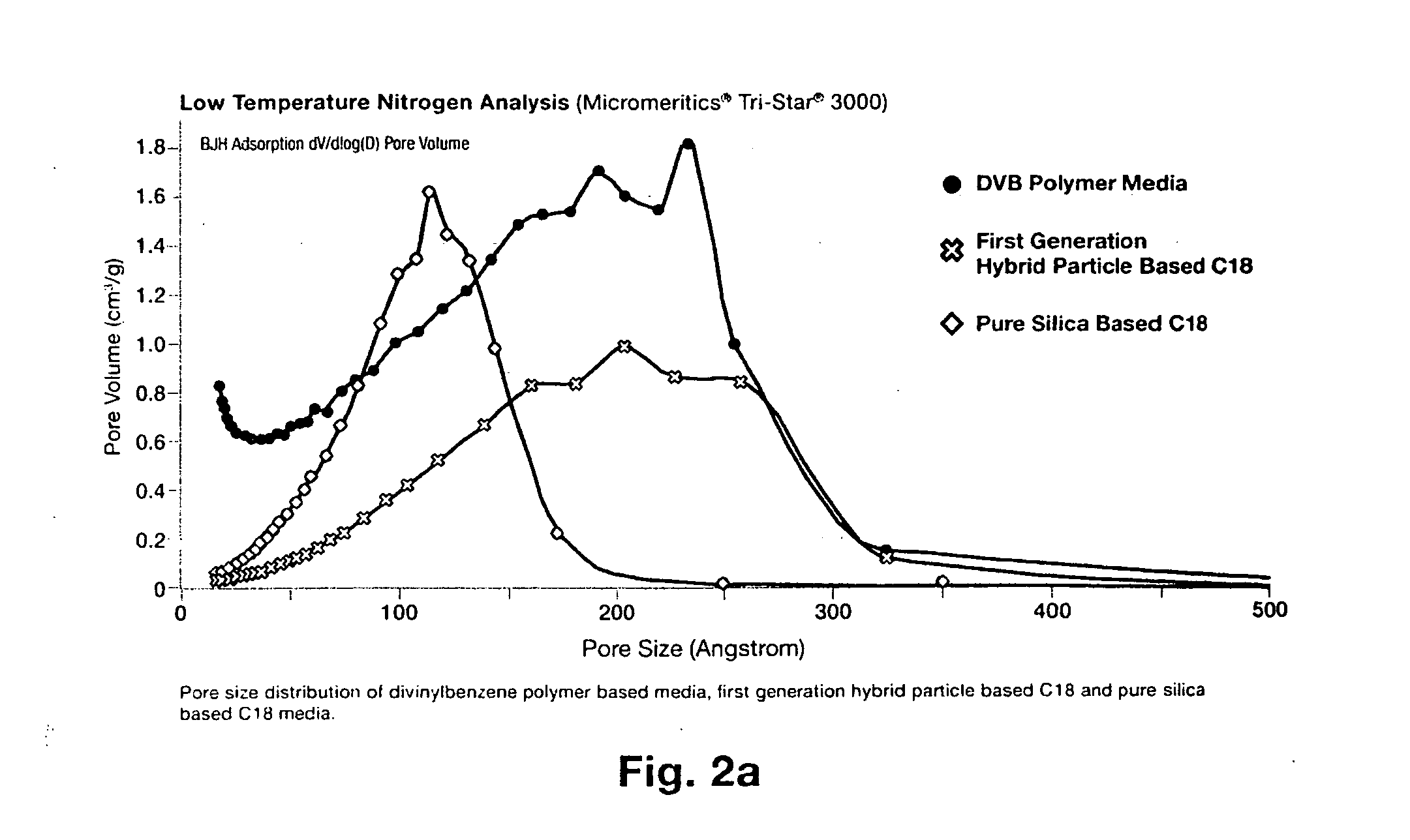PH stable chromatographic media using templated multilayer organic/inorganic grafting
a chromatographic media and organic/inorganic grafting technology, applied in the direction of physical/chemical process catalysts, separation processes, instruments, etc., can solve the problems of low mechanical and structural stability, poor physical morphology of polymer based hplc sorbents, and limited mobile phase limitations
- Summary
- Abstract
- Description
- Claims
- Application Information
AI Technical Summary
Benefits of technology
Problems solved by technology
Method used
Image
Examples
example 1
[0042] Step 1. 55.3 grams of a 5-micrometer, 380 m2 / g surface area, 110 angstrom pore size and 1 ml / g pore volume silica gel sorbent was placed into a pre-weighed 500 ml round-bottom tri-neck flask and then into a vacuum oven and dried at 120° C. for at least 2 hours. After release of vacuum the flask with silica in it was weighed again, and plugged. The exact weight of dried silica had been calculated to be 50.0 grams.
[0043] Step 2. 250 ml of HPLC grade Toluene was added to the flask and slurred with the silica. Then, 17.4 grams of tris(dimethylamino)ethylsilane (TDMAES) was added to the reaction flask. The whole system was placed into a temperature controlled heating mantle and refluxed for 8 hours with stirring. After cooling down, the reaction slurry was filtered and washed with toluene, methanol, hot water (70° C.) and acetone to remove any unreacted reagents as well as hydrolyze off any unreacted leaving groups. Once washed and filtered, the product was placed in the oven to ...
example 2
[0046] Step 1. 55.5 grams of a 5-micrometer, 380 m2 / g surface area, 110 angstrom pore size and 1 ml / g pore volume silica gel sorbent was placed into a pre-weighed 500 ml round-bottom tri-neck flask and then into a vacuum oven and dried at 120° C. for at least 2 hours. After release of vacuum the flask with silica in it was weighed again, and plugged. The exact weight of dried silica had been calculated to be 51.4 grams.
[0047] Step 2. 255 ml of HPLC grade Toluene was added to the flask and slurred with the silica. Then, 20.4 grams of TDMAES was added to the reaction flask. The whole system was placed into a temperature controlled heating mantle and refluxed for 8 hours with stirring. After cooling down, the reaction slurry was filtered and washed with toluene, methanol, hot water (70° C.) and acetone to remove any unreacted reagents as well as hydrolyze off any unreacted leaving groups. Once washed and filtered, the product was placed in the oven to dry at cure at 80° C. for 12 hour...
example 3
[0050] Step 1. 55.0 grams of a 10-micrometer, 380 m2 / g surface area, 110 angstrom pore size and 1 ml / g pore volume silica gel sorbent was placed into a pre-weighed 500 ml round-bottom tri-neck flask and then into a vacuum oven and dried at 120° C. for at least 2 hours. After release of vacuum the flask with silica in it was weighed again, and plugged. The exact weight of dried silica had been calculated to be 50.6 grams.
[0051] Step 2. 255 ml of HPLC grade Toluene was added to the flask and slurred with the silica. Then, 20.4 grams of ethyltriclorosilane was added to the reaction flask. Next, 25 g of Pyridine was added to the flask. The whole system was placed into a temperature controlled heating mantle and refluxed for 8 hours with stirring. After cooling down, the reaction slurry was filtered and washed with toluene, methanol, and hot water (70° C.) to remove any unreacted reagents, byproducts as well as hydrolyze off any unreacted leaving groups. Once washed and filtered the pro...
PUM
 Login to View More
Login to View More Abstract
Description
Claims
Application Information
 Login to View More
Login to View More - R&D
- Intellectual Property
- Life Sciences
- Materials
- Tech Scout
- Unparalleled Data Quality
- Higher Quality Content
- 60% Fewer Hallucinations
Browse by: Latest US Patents, China's latest patents, Technical Efficacy Thesaurus, Application Domain, Technology Topic, Popular Technical Reports.
© 2025 PatSnap. All rights reserved.Legal|Privacy policy|Modern Slavery Act Transparency Statement|Sitemap|About US| Contact US: help@patsnap.com



